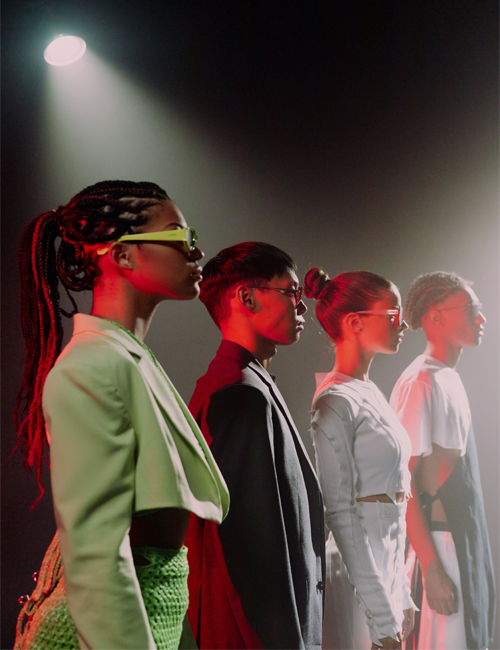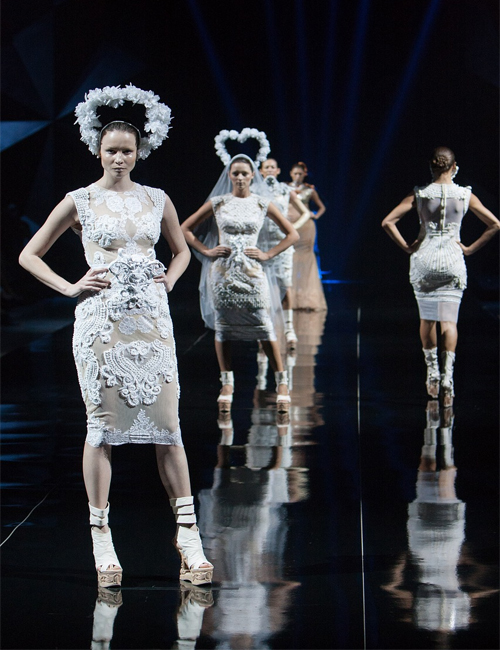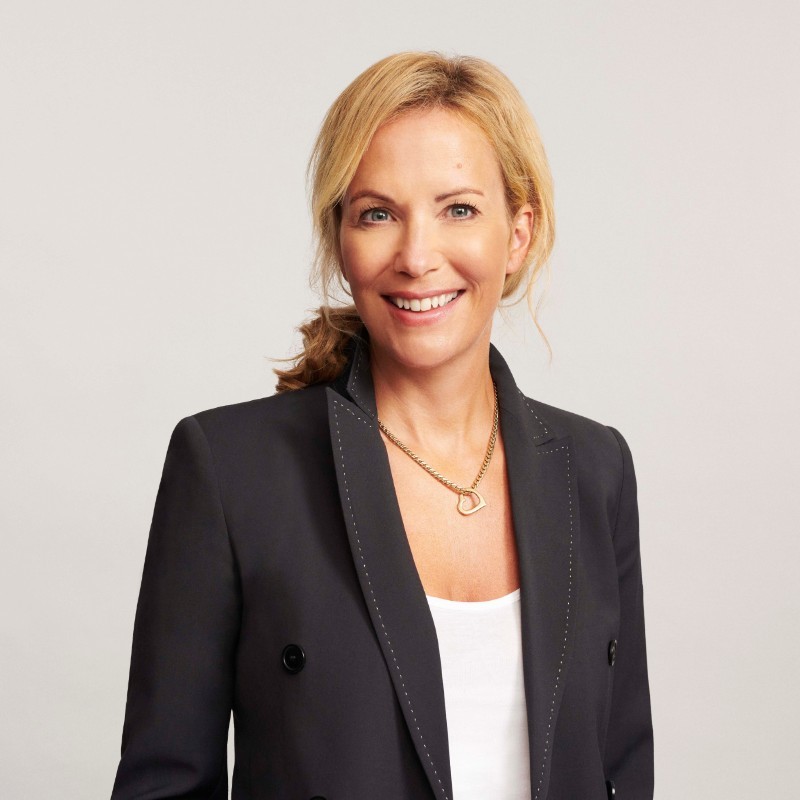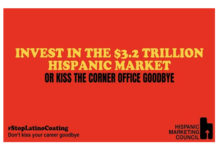Despite a positive shift in public-facing persona, the fashion industry needs to accelerate its diversity, equity and inclusion (DEI) efforts to diversify corporate representation, especially in top executive roles if it’s serious about unlocking business potential, reveals a new study.
The inaugural UK Fashion DEI Report 2024, launched by The British Fashion Council, The Outsiders Perspective and the (Fashion) Minority Report together with McKinsey & Company, reveals the current state of DEI in the UK’s fashion industry, and the business case to prioritise it.
Over the last decade, in line with evolving societal expectations, the fashion industry has significantly shifted its approach to diversity in relation to its public-facing persona. The representation of people of colour on catwalks and in advertising campaigns has increased; from 10-15% in 2012 to 40-50% in 2022. This brings representation within the marketing of UK fashion brands in line (and even exceeding) the population of London, where the majority of UK fashion companies are headquartered. The progression of external representation has made a strong impact, which demonstrates how the industry can move the dial fast when it is focused.
REPRESENTATION MATTERS IN FASHION
However, the data shows that the situation is different when it comes to the industry’s internal leadership teams, particularly those in positions that hold the most power. The report reveals that despite a demonstrable positive shift in fashion’s public-facing representation, top ranks in corporate fashion remain male and white.
Board and executive teams show a significantly lower percentage of diverse representation for both gender and ethnicity. In fact, just 9% of executives and boards in the UK fashion industry are held by people of colour, and 39% by women. Additionally, only 11% of executive team and board “Power Roles” (namely CEO, CFO, Chair and Creative Director) are held by people of colour, and 24% by women.

DIVERSE LEADERSHIP
The study notes that the sector can accomplish much more by diversifying its corporate representation, including executive positions. “For the fashion industry to remain innovative, we need to future-proof our brands with diverse leadership that is agile, resilient, and proactive, not just reactive. Right now, we have a skills gap: we are not marketing ourselves as a leading industry for smart talent,” stated Jamie Gill, Founder of The Outsiders Perspective.
“Our catwalks are diverse, our campaigns are diverse, our consumers are diverse, but our workforce and our decision-makers are not. There is a solid business case for a diverse team, which is arguably most relevant for fashion. We, as an industry, should be leading the charge – because we have the most to gain,” he added.
DIFFERING PERCEPTIONS OF DIVERSITY
Despite the clear lack of representation in the industry, different groups perceive the level of diversity very differently. One of the most interesting findings is that 86% of white men in the industry believe the industry is diverse, compared to 46% of women of colour. Only 14% of white men working in fashion believe that the industry is not diverse, compared with 54% of women of colour, and 48% of people with disabilities.
DEI Consultant & Coach Ben de Pfeiffer-Key, of DPK Consulting & Coaching, said he was not surprised by the disparity in perception of DEI within the fashion industry between the different demographics, particularly the perception of diversity within the white male demographic, versus the marginalised communities. “There’s a huge opportunity for organisations to better understand where these disparities come from to create safe spaces for feedback. It’s then about reviewing where these potential disparities and experiences are coming from. Policies, processes and decision-making will then need to be reviewed in order to level the playing field and create more equitable experiences for those who are marginalised,” said Pfeiffer-Key.
Ultimately, organisations “need to think inwardly before they actively promote a culture of inclusivity, and reflect on the environment and the behaviours that are needed to support, encourage, empower, and advocate for underrepresented voices to thrive in this industry,” he added. “Holding leaders in the industry accountable for driving the change is also crucial, and will require a collective industry effort.”
KEY DEI FINDINGS
The report findings also found that 64% of respondents do not think that their organisation is allocating enough resources to DEI, and 50% do not think DEI is a priority for senior leaders. In fact, just 17% of companies in the UK fashion industry have external DEI targets and a DEI lead. In contrast, 56% of the same group have quantitative targets and a sustainability lead.

Key findings from the report show that:
- 9% of executives and boards in the UK fashion industry are held by people of colour, and 39% by women.
- 11% of executive team and board “Power Roles” (being namely CEO, CFO, Chair and Creative Director) are held by people of colour, and 24% by women.
- 86% of white men in the industry believe the industry is diverse, compared to 46% of women of colour.
- 17% of companies have published quantitative DEI targets (as opposed to 56% who have published sustainability targets).
- Of the top quartile of diverse businesses globally, 35% of their executive teams and board are people of colour, 50% are women.
LEADERSHIP DIVERSITY & COMPANY PERFORMANCE
There is an intrinsic link between leadership diversity and company performance, noted the report, which also sets out a business case with measurable levers to accelerate diversity, talent recruitment and retention. “A sense of belonging applies to all our people, but a considered approach is needed for those from underrepresented groups. Business can then benefit from their perspective and thrive,” noted Daniel Peters, Founder, of the (Fashion) Minority Report.
Caroline Rush, Chief Executive, British Fashion Council agrees: “We must recognise that there is a key business opportunity in dismantling barriers, fostering inclusivity and ensuring we are truly listening to and amplifying underrepresented voices. The report makes it clear that there are undeniable benefits of having a diverse workforce. This is a wake-up call for all of us – we as an industry need to embrace DEI as a lever for advantage. It is critical for brands and organisations to align their external messaging and internal practices to authentically and tangibly contribute to DEI goals.”
EMBRACING & PRIORITISING DEI
Key DEI players in the fashion industry also shared their views on the importance of fashion embracing DEI, and their top priorities. “Fashion can be so influential, and I think there is a massive opportunity here for the fashion world to embrace diversity and author the conversation,” shared Geoffrey Williams, Global Vice President of DEI at Burberry.
Williams also believes that there’s an opportunity to shift from seeing DEI as just a worthy cause, to building a business case for DEI and framing it as a business opportunity. His top priorities for this year include building a data dashboard to be more data-led, the right governance, and supporting staff with the education and resources they need to tackle biases and define best practice.

EVOLVING DEI & REPRESENTATION IN FASHION
Hannah Coleman, CEO, Jimmy Choo, says she is “committed to building a representative business that is empowered by our celebration of difference. Consumers and partners are more likely to engage with a company that actively promotes equality and social responsibility”.
Despite the DEI struggles shared by players in the industry, the company has “taken proactive steps to ensure our DEI initiatives remain consistent by having a dedicated DEI team in place at Group level,” which is “committed to sustaining and evolving DEI efforts, regardless of external factors”, says Coleman. Her top three priorities this year involve focusing on the company’s DEI pillars: culture, talent and community.

EMBRACING PROGRESSIVE CHANGE
Mulberry’s Chief Exec, Thierry Andretta believes that the fashion industry has an important role to play in setting the agenda for the wider cultural and societal conversation. “Fashion is a space known for often breaking boundaries and embracing progressive change, but I believe there is still work to be done to ensure the industry is inclusive and accessible to all,” explains Andretta. “It is a continuous work in progress and one in which we must always be willing to ask ourselves difficult questions and respond honestly and with intention.”
Andretta’s first priority is ensuring that employees “feel safe and valued”. His second priority is attracting new and diverse talent into the business as more voices, perspectives, lived experiences, and backgrounds foster greater innovation and creativity, which will help to drive the business forward. “The greater the variety of voices, influences, cultural backgrounds, opinions, and perspectives, the greater chance of success for the individual and the business globally,” he added. “Diversity of experience and opinion is fundamental to creativity and will be an important part of propelling the UK fashion industry forward.”
ACCELERATING DEI IN FASHION
The report contains other insights from key players in the industry, including Anya Hindmarch, CEO & Founder of Anya Hindmarch; Richard Gilmore, Managing Director of Fred Perry; Padmaja Bommareddy, SVP Corporate Development, Sustainability & DEI at Zalando; Sinead Burke, Founder and CEO of Tilting The Lens; Sian Keane, Chief People Officer of Farfetch, Hayley Wojcik, Chief People & Culture Officer at The Business of Fashion; June Sarpong OBE on the Executive Board of the British Fashion Council; and Alison Loehnis, Interim CEO of Yoox Net-A-Porter.
The study also offers three strategic levers to unlock business potential from in accelerating DEI efforts in the industry to help UK fashion businesses to increase representation through holistic business measures. They include leading from the top; getting the data in line with local privacy laws; and having ‘best-in-class’ systems and pathways.
You can read the full report here.




































